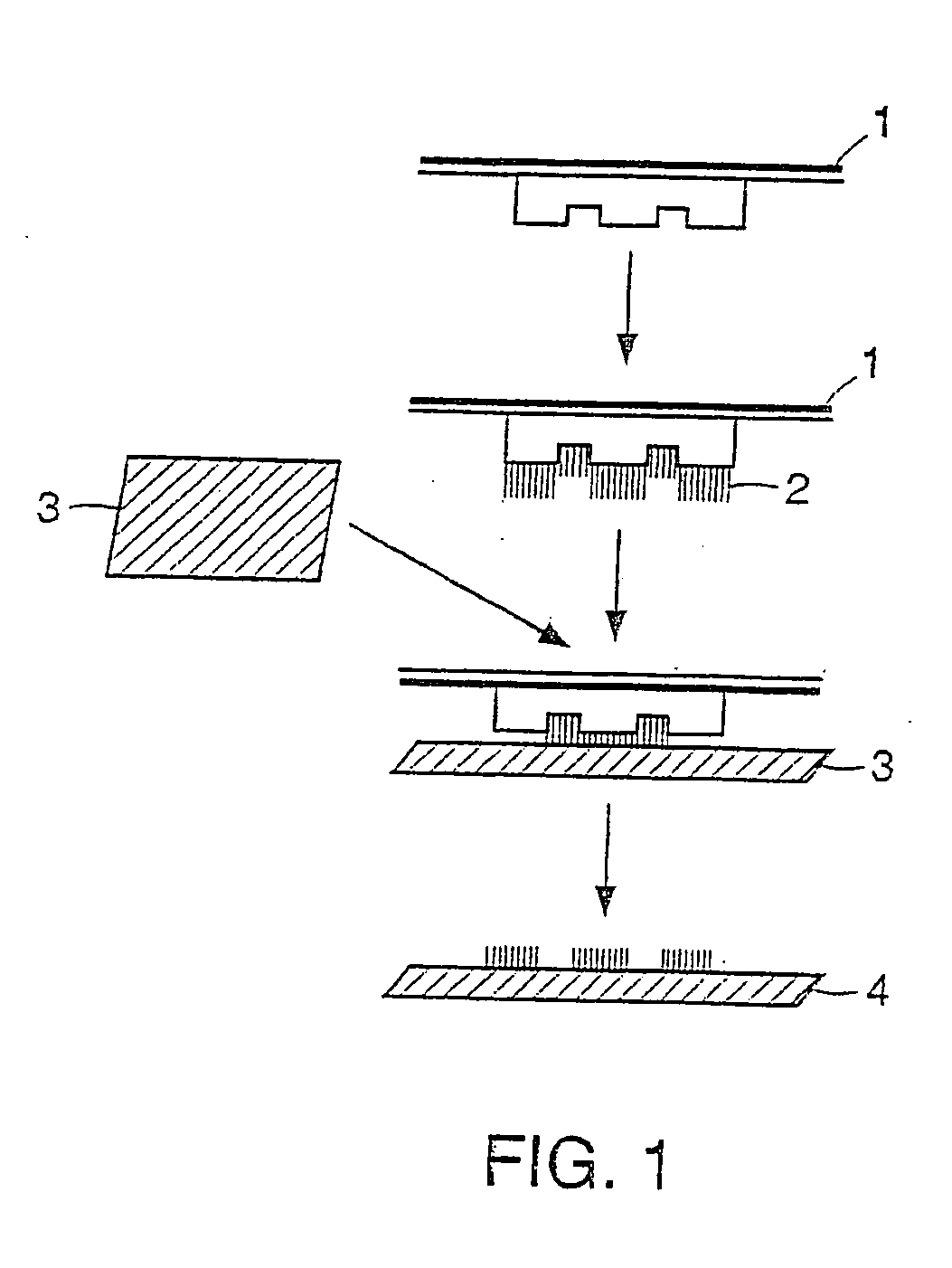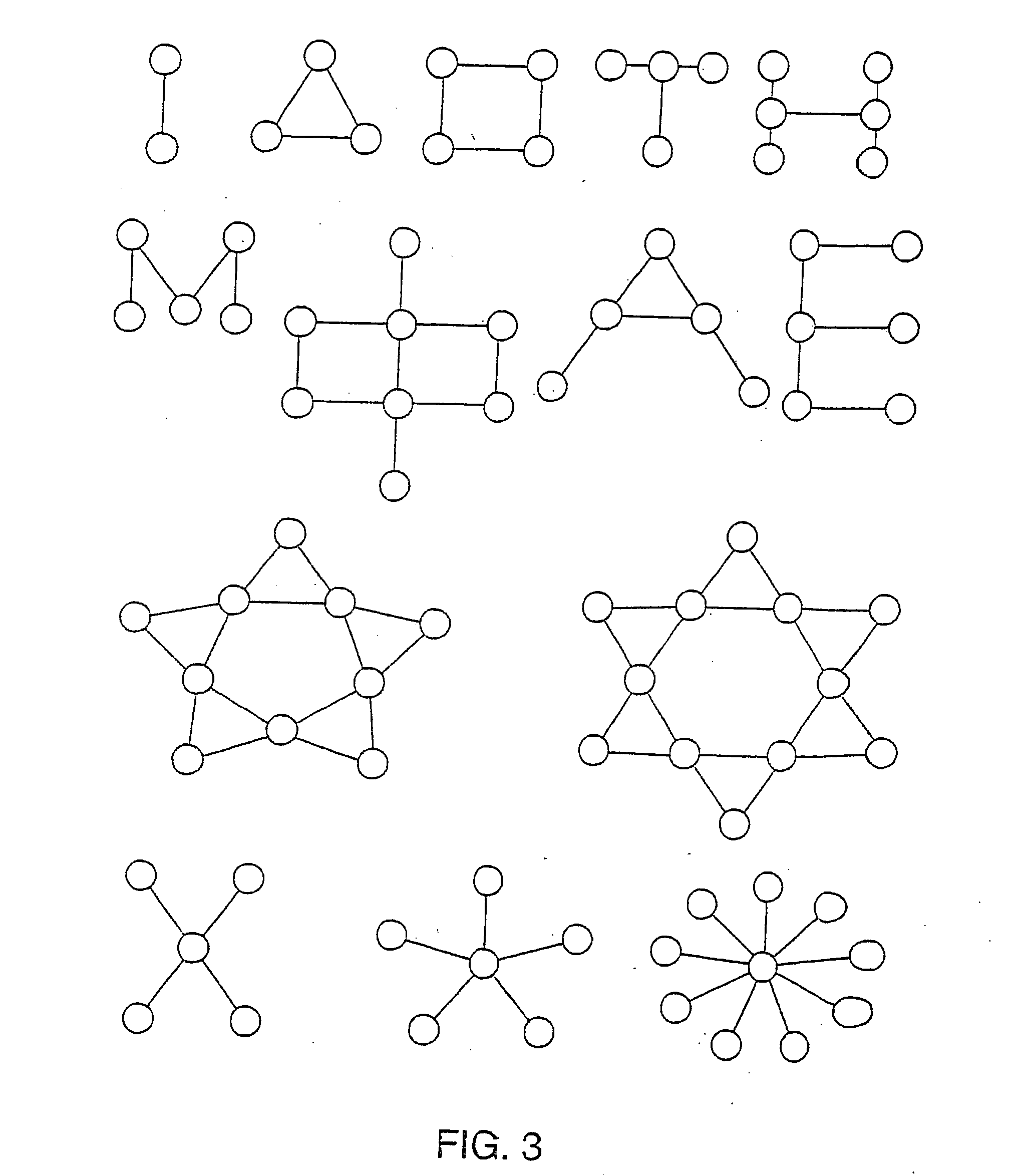Self-assembling peptide surfaces for cell patterning and interactions
a peptide surface and cell patterning technology, applied in the field of self-assembling peptide surfaces for cell patterning and interactions, can solve the problems of sams, can be difficult and/or expensive to manufacture, and achieve the effect of convenient manufacture and purification
- Summary
- Abstract
- Description
- Claims
- Application Information
AI Technical Summary
Benefits of technology
Problems solved by technology
Method used
Image
Examples
example 1
Preparation of Patterned SAMs Glass Chip
[0069] A 10:1 (w:w) mixture of Sylgard Silicone Elastomer 184 and Sylgard Curing Agent 184 (Dow Corning Corp., Midland, Mich.) was casted over a master, which was generated by photolithography, and pressure degassed. After sitting at room temperature for 1 hour, the PDMS was cured at 60° C. for 2 hours. The stamp was carefully peeled off the master after cooling to room temperature and rinsed with ethanol. The PDMS stamp was inked by a cotton swab which has been moistened with a 5 mM solution of (1-mercaptoundec-11-yl)hexa(ethylene glycol) (HO(CH2CH2O)6(CH2)11SH) in ethanol. The resulting stamp was placed on the gold substrate (125 ★ gold on a titanium-primed 24×50-2 microscope cover glass) and gentle hand pressure was applied to aid in complete contact between the stamp and the glass chip. After 1 minute, the stamp was peeled off the glass chip and the resulting substrate was immersed directly in a 2 mM solution of (RADC)3 AAAC (SEQ ID NO: 1...
PUM
| Property | Measurement | Unit |
|---|---|---|
| temperatures | aaaaa | aaaaa |
| temperature | aaaaa | aaaaa |
| adhesion | aaaaa | aaaaa |
Abstract
Description
Claims
Application Information
 Login to View More
Login to View More - R&D
- Intellectual Property
- Life Sciences
- Materials
- Tech Scout
- Unparalleled Data Quality
- Higher Quality Content
- 60% Fewer Hallucinations
Browse by: Latest US Patents, China's latest patents, Technical Efficacy Thesaurus, Application Domain, Technology Topic, Popular Technical Reports.
© 2025 PatSnap. All rights reserved.Legal|Privacy policy|Modern Slavery Act Transparency Statement|Sitemap|About US| Contact US: help@patsnap.com



